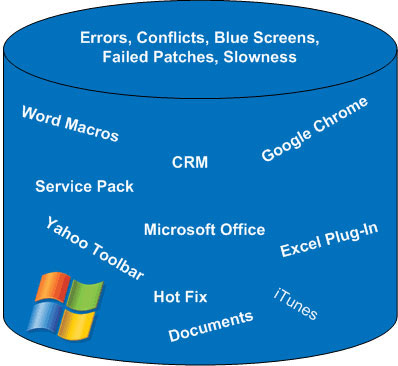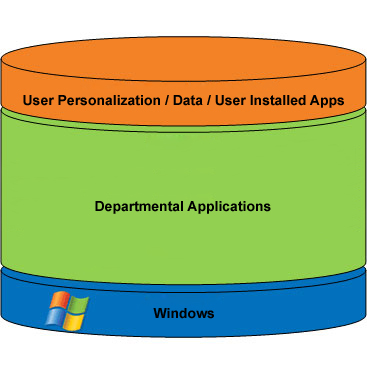VMware Buys Wanova, Possible Edge in Desktop Virtualization
I have been hoping and expecting VMware to acquire Unidesk for years now. Instead, it ended up acquiring the cousin of Unidesk, Wanova.
VMware made a very good move, as Wanova has very good technology. Still, is it good enough to position VMware to own the desktop virtualization market like they currently do the server virtualization? The answer is no. VMware still has a few purchases to make before that happens.
I have been touting for a while now that in order for VMware to be on par with Citrix from the standpoint of features, capabilities and flexibility at the desktop level, it needs to acquire Ericom and then MokaFive. Interestingly, I believe the acquisition of Wanova forces Citrix to now acquire Unidesk, which will plug that feature capability in its portfolio, and it would perfectly complement Citrix's VDI-in-a-box.
While the acquisition of RingCube gave Citrix the personal vDisk -- and that is a huge feature -- it is somewhat different from Wanova and Unidesk in that its use cases and management capabilities are not as flexible. While Citrix can definitely build on the personal vDisk, I don't see a way around an acquisition.
If Citrix makes these acquisitions, it would be truly two fantastic solutions capable of handling any kind of desktop virtualization need.
Now back to Wanova. The company's claim to fame is based on layering technology. What is layering, you ask? To answer that, check out Fig. 1 which represents a traditional Windows desktop with all the applications and files installed on it. Messy, right? It's hard to manage, hard to isolate.
 |
Figure 1. Traditional Windows desktop in all its messy grandeur. (Click image to view larger version.) |
Wanova, on the other hand, isolates everything in separate containers or layers, as shown in Fig. 2.
 |
Figure 2. Windows desktop in the layered, Wanova-fied approach. (Click image to view larger version.) |
The operating system will always be in its own layer in read-only format, so it will never be modified. Applications are also separated in their own container, and so are user personalization, data and user-installed apps. The best part of isolating these components is the fact that you can do the equivalent of snapshots at the layer level.
So, let's imagine a situation where the CFO somehow corrupted Excel; with the click of a button, you can roll back the appropriate layer to a different point in time when Office was working and thereby repair that particular application.
Wanova also has a synchronization engine, which means you can deliver these layers for local execution on devices that are capable of it. The synchronization engine bi-directionally and asynchronously replicates the layers with their counterparts in the datacenter. This technology can be used on both physical and virtual machines and combines the benefits of non-persistent images with the flexibility of persistent images. So now, you can deploy the operating system in its own layer, the department applications in their own layers, user-installed applications in their own layers, and user personalization and data in separate layers.
I am very excited to see what VMware will do with this technology, but I definitely think it is high time for VMware to finally acquire a type-1 client hypervisor company. Such an acquisition, when combined with the Wanova one, can become a lethal combination against any and all competitors. I can't wait for VMworld 2012.
Posted by Elias Khnaser on 05/22/2012 at 12:49 PM